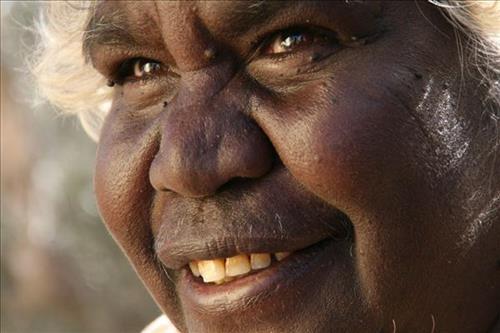111581947025
Parnpajinya
“We used to camp here before, in Parnpajinya. See these brown hills? This is where I been camping right there with no house, nothing. These two hills are Mount Whaleback. See the two orange ovals? That’s where the Dreamtime death adders used to sleep. There was a man snake and a woman snake. Where the man snake slept is now Boomerang Oval, and the woman’s side is now the hospital and the clinic. Yuwayi (yes).”
– Mantyil May Brooks
Parnpajinya is a small Aboriginal community adjacent to the town of Newman. This site lies within May’s ngurra (home Country, camp), the area which she knew intimately and travelled extensively with her family in her youth.
In her account of the area, May describes the Jukurrpa (Dreaming) snakes that lived in this area. The term Jukurrpa is often translated in English as the ‘Dreaming’, or ‘Dreamtime’. It refers generally to the period in which the world was created by ancestral beings, who assumed both human and nonhuman forms. These beings shaped what had been a formless landscape; creating waters, plants, animals, and people. At the same time they provided cultural protocols for the people they created, as well as rules for interacting with the natural environment. At their journey’s end, the ancestral beings transformed themselves into important waters, hills, rocks, and even constellations.




